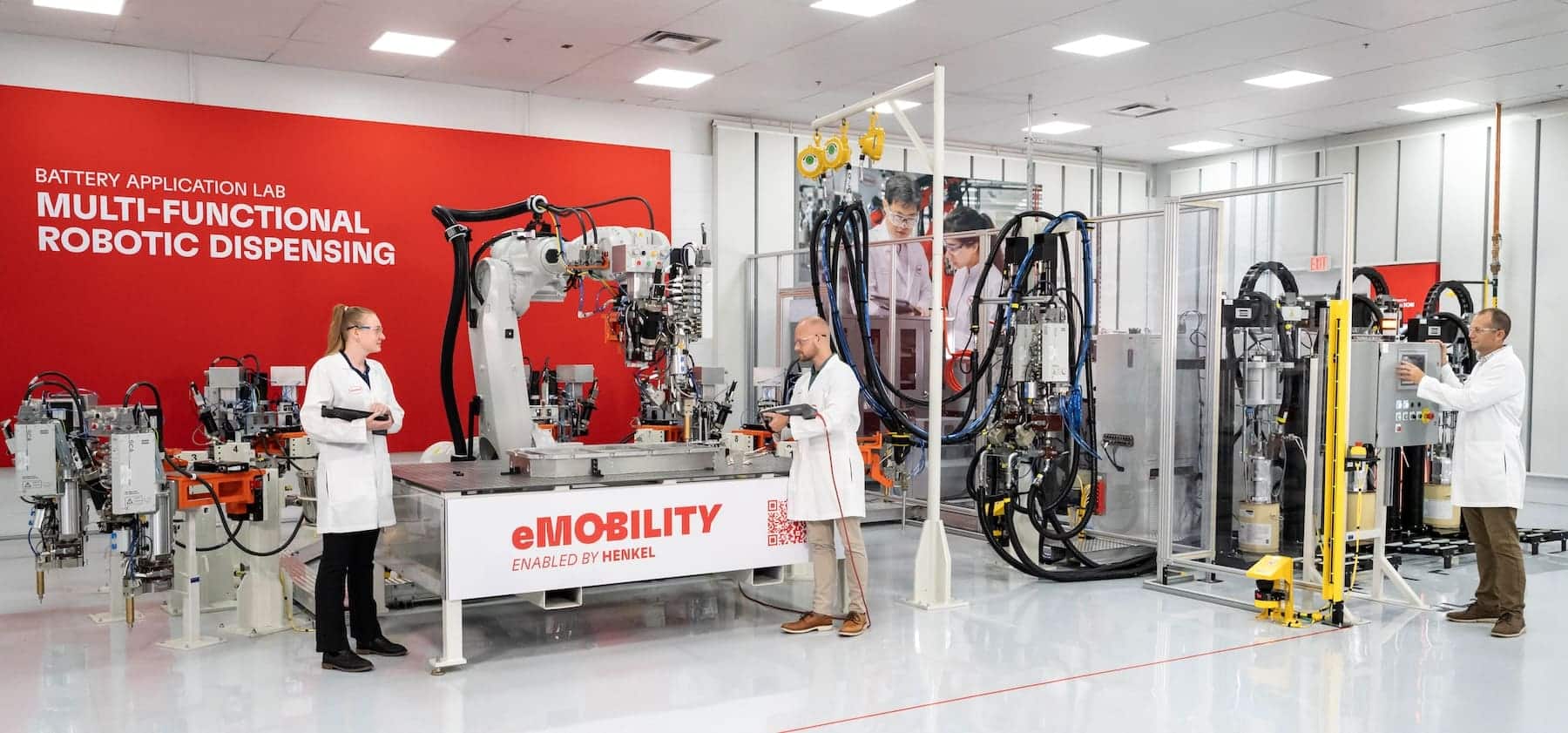Henkel has officially opened its new North American Battery Application Center, a facility dedicated to the application and validation of materials for electric vehicle (EV) batteries. With this opening, the German multinational strengthens its global network of battery engineering centers and solidifies its support for automakers and battery manufacturers in the region.
The new center complements the Battery Engineering Center in Düsseldorf (Germany), inaugurated in 2023, and features an application area and a Battery Test Center specializing in performance and safety testing.
Applied Innovation at an Industrial Scale
The facility is equipped with a high-capacity six-axis robot capable of replicating an industrial-scale production environment. This equipment enables Henkel engineers to work closely with manufacturers to fine-tune key parameters such as application speed, dispensed volume, temperature, and trajectory precision, thereby reducing the risk of errors during advanced production phases.
According to Marcel Fleck, Senior Vice President of Automotive Components at Henkel Adhesive Technologies North America:
“The new center is part of Henkel’s long-term global investment strategy in solutions for electric mobility. It will enable us to accelerate collaboration and the deployment of high-performance materials for next-generation batteries.”
A Wide Portfolio of Materials for E-Mobility
The center offers testing for application solutions across a broad range of chemical solutions:
- Thermal interface materials (TIMs) for heat management.
- Sealants and structural adhesives that enhance the safety and durability of modules.
- Debonding-on-demand adhesives, which facilitate battery disassembly and improve recyclability.
These materials aim to balance factors such as mechanical strength, insulation or electrical conductivity, chemical resistance, and durability, always with a focus on sustainability and circular economy principles.
Lead Role at Battery Show North America 2025
Henkel will showcase its advancements at the Battery Show North America 2025, taking place from October 6 to 9 in Novi, Michigan. At the event, the company will present its vision of “end-to-end battery solutions”, covering everything from conceptual design to battery circularity.
Highlighted program features include:
- Modeling and simulation in collaboration with AVL: enabling attendees to virtually evaluate adhesive and material performance under real conditions, reducing development times and prototype costs.
- Exclusive panel with General Motors, Henkel, AVL, and Argonne National Laboratory on October 7, discussing the future of electric mobility and the role of advanced materials.
- Live demonstrations of on-demand disassembly technologies (EDL Tapes), which use low electrical currents to quickly and safely separate materials, promoting reuse and recycling.
Vice President of Electronics and E-Mobility at Henkel North America, Pankaj Arora, explained:
“Our mission is to accelerate innovation and scaling in battery manufacturing without losing sight of sustainability. With this holistic approach, we support both safety and circularity in electric mobility.”
Sustainability as a Strategic Focus
Henkel emphasizes that its new Michigan center aims not only to optimize manufacturing processes but also to drive sustainable solutions across the entire battery value chain. The goal is clear: to reduce waste, enhance recyclability, and ensure critical materials remain in the economic cycle longer.
Through this investment, the company reinforces its presence in one of the world’s most competitive and strategic markets at a pivotal moment for the widespread adoption of electric vehicles in North America.
📌 Frequently Asked Questions (FAQ)
1. What role do adhesives play in electric vehicle batteries?
Specialized adhesives provide structural bonding, vibration safety, thermal management, and durability for battery modules.
2. What are Henkel’s “debonding-on-demand” adhesives?
Materials designed to detach controllably when low electrical current is applied, facilitating battery recycling at end-of-life.
3. How does the new Battery Application Center foster innovation?
It allows manufacturers and suppliers to validate processes and materials in a simulated industrial environment, reducing errors and accelerating mass production transition.
4. Why did Henkel choose Michigan for its new center?
Michigan is a historic automotive hub with significant EV investment, enabling direct collaboration with OEMs and battery producers.
via: henkel

